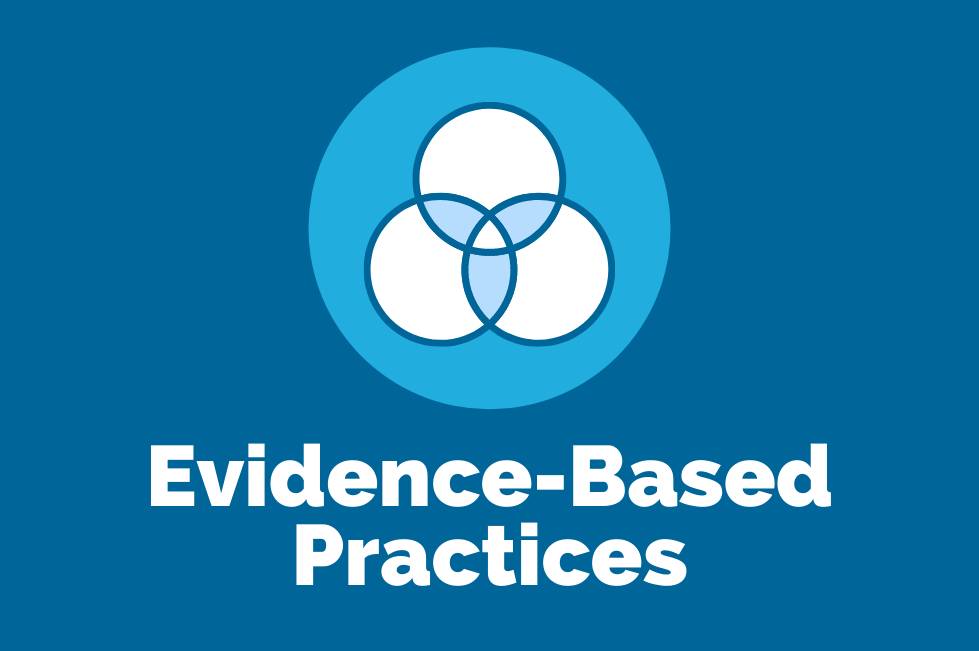Due to forecasted weather conditions, the university has implemented REMOTE STATUS on Friday, December 19, 2025. Students, faculty, staff, see email for more information.
We can't say it enough - Use evidence-based practices!

This article originally appeared in START Connecting in February 2021.
For students with autism spectrum disorder (ASD), the research literature is clear about the importance of using evidence-based practices and professional judgement to systematically address learning and behavior support needs, while also respecting the strengths and preferences of the individual and the family. Collecting and evaluating data assures interventions are effective in developing social, behavioral, adaptive, and academic skills. The START Evidence-Based Practice (EBP) page and handout describes this decision-making model.
What is an easy way to learn about these evidence-based practices? The AFIRM Modules. Maybe you've heard of them but you haven’t had time to take a look or you just haven’t checked them out for a while. They are worth the time! These free modules take you through empirically-supported interventions identified by the National Clearinghouse on Autism Evidence and Practice (NCAEP) 2020 report. If you haven’t visited for a while, you will find an Introduction to ASD, 27 EBP modules, and AFIRM for Paraprofessionals: Simulated E-Learning.
If you are struggling with interfering behaviors and lack of engagement, you could look at the Antecedent-based Intervention module. If you want to know how exercise can improve targeted behaviors, review the Exercise module. Or maybe your team needs a refresher on Prompting and Reinforcement. This is a good way to access quality professional development for you or your team. Check out the PowerPoint created by our colleague Shannon Shy at Livingston Educational Service Agency (LESA) for information on setting up an elegantly simple and effective system for working through and discussing modules as a team.
AFIRM provides a collection of online modules to guide the user through a variety of EBPs for use with individuals with ASD ranging in age from young children through 22 years old (also check out the Toddler Initiative modules). Each EBP module consists of four lessons: 1) Basics, 2) Planning for the EBP, 3) Using the EBP, and 4) Monitoring Progress. Step-by-step guides for implementing the interventions and additional customizable resources are also included.
Knowing EBPs is not enough since we need to systematically select EBPs for particular students in particular contexts. The Selecting an EBP page identifies a four step process: 1) Identifying the behavior, 2) Defining the extent of the behavior (collecting baseline data), 3) Establishing an observable and measurable goal or outcome, and 4) Choosing an EBP, which includes a checklist for use with individual students. A Domain Matrix is also available on the AFIRM site to help identify EBPs for the age of the learner and the domain of instruction.
If you are curious to learn more about how the AFIRM modules have been used nationally, check out the article Disseminating Information on Evidence-Based Practices for Children and Youth with Autism Spectrum Disorder: AFIRM by Sam Odom and colleagues.
Additionally, the Association for Science in Autism Treatment (ASAT) provides a broader look at treatments and what works and what needs more evidence, and includes a page with information about becoming a savvy consumer/educator that is helpful for both providers and families.
What are your next steps to expand and deepen your own and your team’s understanding of EBPs to ensure they are used systematically and with intention for all students?
Resources:
- START Project: Resources for Evidence-Based Practice
- National Clearinghouse on Autism Evidence and Practice (NCAEP): 2020 Evidence-Based Practices Report
- Sam, A. M., Cox, A. W., Savage, M. N., Waters, V., & Odom, S. L. (2020). Disseminating Information on Evidence-Based Practices for Children and Youth with Autism Spectrum Disorder: AFIRM. Journal of Autism and Developmental Disorders, 50(6), 1931–1940.
- AFIRM Module E-Learning with a Group PowerPoint, created by Shannon Shy at LESA
- Association for Science in Autism Treatment (ASAT)
- AFIRM:
Written by: Amy Matthews, Ph.D., BCBA - Project Director
